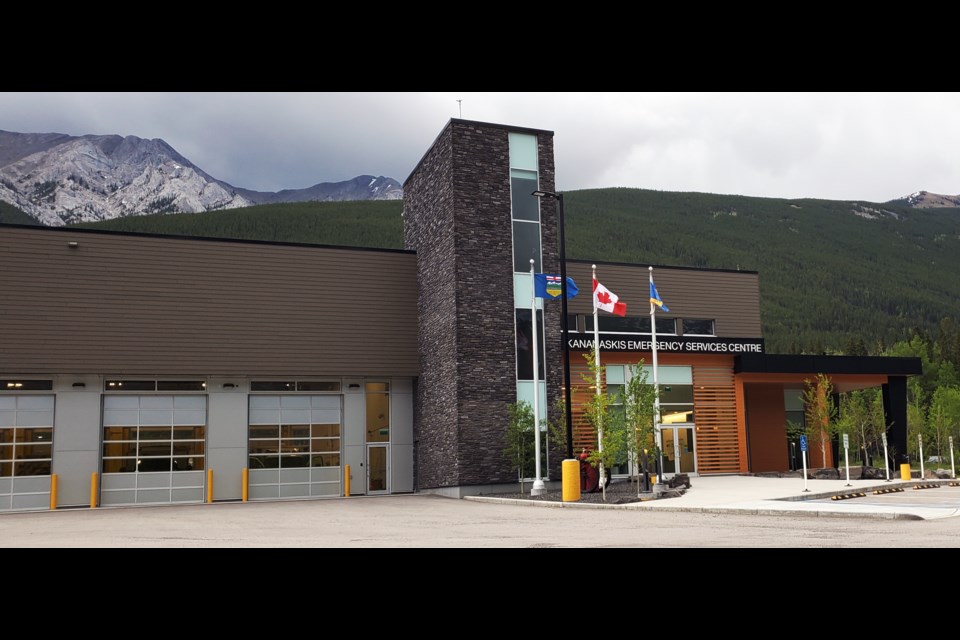KANANASKIS COUNTRY – The majority of Kananaskis Improvement District (KID) councillors are calling for the installation of four satellite phones at popular recreational areas after what has been a year full of high-profile emergency incidents in the provincial region.
Coun. Claude Faerden with KID's telecommunications committee said emergency satellite phones would address response times in certain areas of the park faster than building up all the necessary cellular infrastructure needed to make up for the lack of cell coverage.
“This is a no-brainer as far as safety goes,” said Faerden. “The number of fatalities this summer alone, for me, is a very sore point of frustration knowing that the technology should not be a limitation in this circumstance.”
Kananaskis Emergency Services (KES) was busy this summer responding to drowning, hiking and mountain biking incidents, among others. In July and August, four people and a dog drowned at Spray Lakes Reservoir in two separate events.
The goal of the satellite phone initiative is to assist emergency services in their response while increasing overall safety for visitors, residents and businesses with phones set up at Driftwood day use area and Burstall Pass trailhead in phase one, and North Interlakes and Ptarmigan Cirque day use areas in phase two. From May 19 to Sept. 14, 2023, phase one locations would be used in a pilot to test usage.
By providing access to satellite phones, the hope is emergency response and rescue times – which are down this year for KES – might be improved.
In a report to KID council on Sept. 27, Fire Chief Gary Roberston said average turn-out times – the time from when a unit receives a notification of an emergency to the beginning point of response time – have increased 36 seconds from 2021.
A review of the data is underway to determine what might be the cause for the increase, he said.
“We are looking into that to see how many of those calls [that were delayed] crossed over with multiple events where there were delays because we needed to call for secondary crews to staff if the primary crew was out, or other factors that could have been at play there,” Roberston said.
From July 1, 2022 to August 31, 2022, KES responded to 15 rescue calls, including motor vehicle collisions. Year-to-date, there have been 23 rescue calls.
Of those requiring emergency response during that reporting period – including rescue, fire, medical and other services – four calls were from residents, nine from businesses, and 59 from park visitors. Year-to-date, residents account for seven calls, businesses for 78 and visitors for 84.
Call volume from July to August was also up 50 per cent from the same period in 2021, despite visitation numbers being down.
Coun. Darren Robinson, who was the only councillor to vote against administration returning with funding options for the satellite phone program in the upcoming 2023 budget, argued it should not be KID’s duty to spend dollars on a project of this scope.
“I love the safety element and all the potentially good things that could come out of this,” he said. “And I would be strongly in support of advocating the appropriate people who are more responsible than us.”
Efforts to fund the project would likely seek the support of provincial or federal partners.
Parks Canada and the B.C. government partnered on an $80,000 project to install four satellite phones in Kootenay National Park, spaced about a 15-20 minute drive apart on Highway 93 South where there is no cell reception for 105 kilometres between Castle Junction and Radium Hot Springs.
The B.C. government contributed about $40,000 toward the purchase and installation of the emergency phones, but Parks Canada was responsible for covering the remaining purchase and installation costs, as well as operational costs and maintenance of the emergency telephones.
These prices were before the COVID-related impacts to supply chains and subsequent increase in prices, but some council members believe a similar agreement could be struck in K-Country.
Coun. Darren Enns said if Kananaskis is to be marketed to the world as a desirable place to visit, it must too be supported by the senior levels of government who market it.
“If you invite people to come to this place, you have to provide the support to make sure that their visit is safe,” said Enns.“If you’re going to host the world, you have to provide the infrastructure to do that and I don’t believe that’s always the municipality’s job to do.”
Council approved $500,000 in capital funding for telecommunications in 2023. The project description as outlined in KID’s 2022 capital budget, however, indicates that the project would be dependent on securing partnerships and supplemental funding. Another $50,000 from the Canada Community Building Fund in 2022 was approved for the design of appropriate technologies and equipment.
Council will consider other available funding options for the emergency satellite phone program as outlined by administration’s report in upcoming 2023 budget discussions.
The Local Journalism Initiative is funded by the Government of Canada. The position covers Îyârhe (Stoney) Nakoda First Nation and Kananaskis Country.




